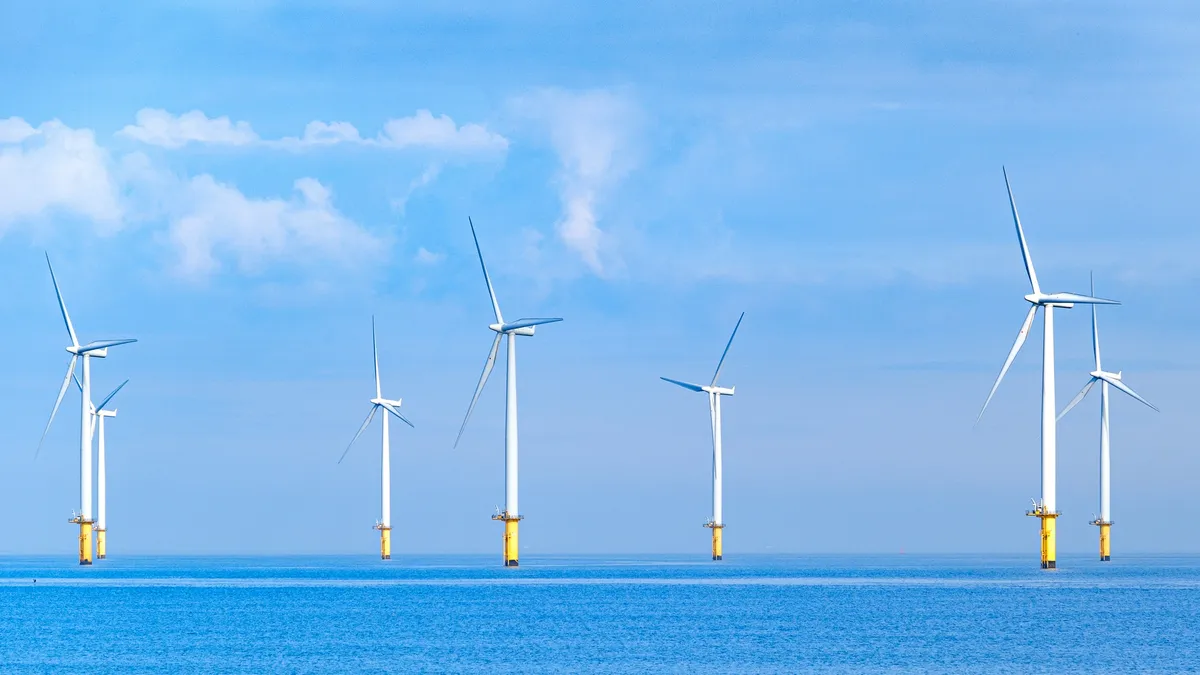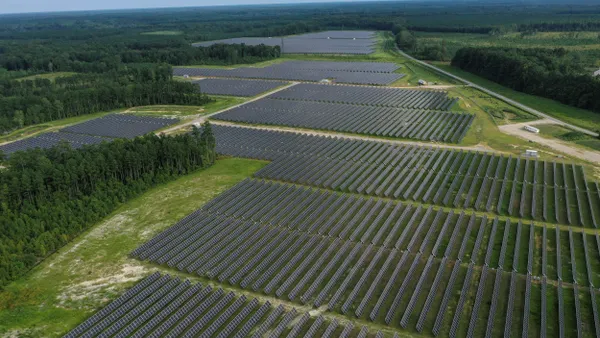Dive Brief:
- Duke Energy has identified two potential pathways, including four final portfolios, that would enable the 70% carbon reduction required by state law in North Carolina by 2030.
- Each of the plans would see all coal power plants retired by 2035, add 3,700-5,900 MW in new renewable energy resources, and lay the groundwork for the eventual dispatch of small modular nuclear reactors. Costs would increase 1.9% to 2.7% annually through 2035.
- Environmental advocates, who plan to propose their own alternative to Duke Energy’s portfolios, called the plans a “mixed bag” and expressed concern about the utility’s intent to build natural gas generation.
Dive Insight:
Although the path forward may not look exactly like the future contemplated in North Carolina’s House Bill 951, the state decarbonization mandate that passed in 2021, Duke Energy has a plan to achieve a 70% carbon emissions reduction by 2030.
Of the four proposed plans released by Duke Energy on Monday, only one of them actually hits the 2030 target. However, the only plan to hit the deadline does not include the development of offshore wind or small modular nuclear reactors at the scale that was contemplated by the state legislature. This plan calls for the construction of 800 MW of offshore wind, 5.4 GW of solar, and 1,800 MW of new energy storage to meet the 2030 target.
The other three portfolios integrate the offshore wind and nuclear requested in House Bill 951, but require the timeline for the 70% emissions reduction to be extended by two to four years. A portfolio that focuses on offshore wind development but excludes nuclear energy would reach the target by 2032, but would require extensive transmission upgrades, according to Duke Energy. On the other hand, a focus on nuclear without offshore wind would reach 70% by 2034 and allows additional time for the construction of pumped storage hydropower. And a final plan which calls for half offshore wind, half nuclear energy would require an extension to 2034.
All four portfolios contemplate the deployment of more than 3 GW of new natural gas generation, except the final offshore wind and nuclear hybrid plan, which requires less gas generation.
“From the outset we were looking at this as an all of the above approach,” said Bill Norton, a spokesman for Duke Energy. “When you’re talking about the Carolinas and the Carolinas weather, with the potential for two weeks of cloud cover and no wind in January, that’s the dependable energy supply that coal has filled in the past, and we need that dependability to balance out renewables.”
However, a coalition of environmental groups including the North Carolina Sustainable Energy Association, the Sierra Club, the Southern Alliance for Clean Energy and the Southern Environmental Law Center, plans to file an alternative proposal in July. This independent plan will challenge some of the underlying assumptions the coalition believes went into the Duke Energy proposal — including the need for new natural gas generation, according to Gudrun Thompson, a senior attorney with the Southern Environmental Law Center.
“The law does allow for some flexibility in meeting those [emissions] targets, … but we think the technology exists now to meet the near-term 2030 target,” Thompson said. The group’s alternative plan, she said, “will maximize clean energy resources and keep costs low for Duke ratepayers, and reduce some of the risk to Duke ratepayers from relying on fossil fuels and unproven technologies.”
The North Carolina Utilities Commission is expected to review a variety of proposed carbon plans, including Duke’s proposal, by the end of the year.














